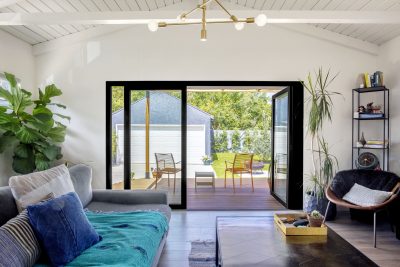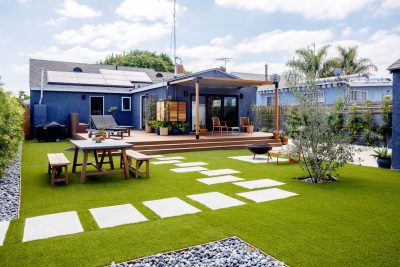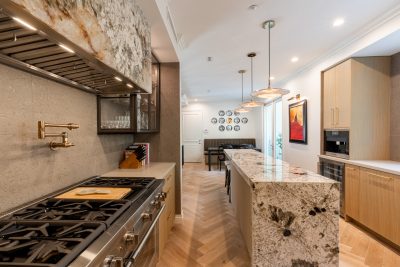
Choosing the Design of an Accessory Dwelling Unit: Tips and Ideas
April 27, 2023
Introduction
What will the ADU be used for?
Before choosing the design, you need to determine what the ADU will be used for. Will it be a guesthouse, a rental property, or a permanent residence? This will help you plan the space accordingly and choose the appropriate layout and features.
How should you plan the space?
Space planning is a crucial aspect when designing an Accessory Dwelling Unit (ADU), as it directly impacts the functionality and overall livability of the space. Before diving into the design process, it’s important to clearly define the end goal for your ADU. Will it be a guest house, a rental property, or a permanent residence? Each purpose requires different considerations in terms of space allocation and layout.
For a guest house, the primary focus should be on creating a comfortable and welcoming space for visitors. Consider incorporating a private bedroom, a well-appointed bathroom, and a small living area. Adequate storage space should also be taken into account to accommodate guests’ belongings.
In the case of a rental property, space planning becomes crucial to maximize the potential for rental income. Efficiently dividing the space into separate living areas, such as bedrooms, a kitchen, and a living room, is essential. Consider incorporating features like private entrances, separate utilities, and ample storage to ensure privacy and convenience for tenants.
If the ADU will be a permanent residence, prioritize designing a functional and livable space that meets the needs of the occupants. This includes planning for essential areas such as a bedroom, bathroom, kitchen, and living area. Additionally, consider long-term functionality by incorporating flexible spaces that can adapt to changing needs, such as a home office or a multi-purpose room.
Regardless of the end goal, optimizing the available space is key. Utilize smart storage solutions, such as built-in cabinets and multifunctional furniture, to maximize storage capacity. Emphasize open and flexible layouts to create a sense of spaciousness. Take into account traffic flow and ensure that rooms are easily accessible and interconnected.
When designing an ADU, space planning is crucial to ensure the space aligns with the intended purpose, whether it’s a guest house, rental property, or permanent residence. By carefully considering the end goal and incorporating efficient layouts, you can create an ADU that is functional, comfortable, and tailored to your specific needs.
Choosing the right colors
Choosing the right colors for your Accessory Dwelling Unit (ADU) is an important decision that can significantly impact the overall ambiance and feeling of the space. Colors have the power to evoke emotions, set moods, and create visual harmony within a room. When selecting colors for your ADU, consider the following factors to create a desired atmosphere.
- Neutrals for Timeless Appeal: Neutral colors like whites, grays, beiges, and soft pastels provide a timeless and versatile backdrop. They create a sense of calmness, enhance natural light, and make the space feel open and airy. Neutrals also serve as a perfect canvas for incorporating pops of color through furniture, accessories, or artwork.
- Vibrant Colors for Energy and Personality: If you want to infuse energy and personality into your ADU, consider incorporating vibrant colors. Bold shades like deep blues, rich greens, or warm reds can create focal points and add visual interest. Use them strategically as accent walls, statement furniture, or colorful accessories to liven up the space.
- Earthy Tones for Warmth and Comfort: Earthy tones, such as warm browns, soft greens, and earthy grays, can create a cozy and inviting atmosphere. These colors evoke a sense of nature and grounding, making your ADU feel warm and comfortable. Use them on walls, textiles, or natural materials like wood and stone for a harmonious and organic look.
- Cool Hues for Serenity: Cool colors like blues, greens, and purples can instill a sense of tranquility and serenity. They are particularly suitable for bedrooms or areas where relaxation is desired. Lighter shades of blues and greens can create a soothing and spa-like ambiance, while deeper hues can add depth and sophistication.
- Consider Psychological Effects: It’s important to consider the psychological effects of colors. For example, yellow is associated with happiness and energy, while green promotes harmony and balance. Blue is often linked to calmness and productivity, while red can evoke passion and excitement. Think about the desired mood and purpose of each room when selecting colors.
The color choice should also take into account personal preferences, the ADU’s architectural style, and the surrounding environment. Experiment with color swatches, create sample boards, and visualize how different colors interact with each other. By carefully choosing colors that align with your vision and desired atmosphere, you can transform your ADU into a space that reflects your unique style and enhances the overall experience for its occupants.
Choosing surface finishes
When it comes to surface finishes in your Accessory Dwelling Unit (ADU), selecting the right materials is crucial for both aesthetics and functionality. The choice of materials can impact the overall look and feel of the space, as well as its durability and maintenance requirements. Consider the following factors when deciding on surface materials for your ADU.
- Expensive vs. Cheaper Materials: Expensive materials often boast higher quality, unique aesthetics, and superior durability. They can elevate the overall luxury and visual appeal of your ADU. However, there are also budget-friendly options that mimic the look of expensive materials without the hefty price tag. For example, laminate or vinyl flooring can mimic the appearance of hardwood at a more affordable cost.
- Durability: It’s essential to select materials that can withstand the wear and tear of daily use, especially in high-traffic areas. For flooring, options like hardwood, ceramic tile, or luxury vinyl are known for their durability and longevity. In kitchens and bathrooms, consider using materials that are moisture-resistant, such as porcelain tile or quartz countertops, to prevent damage.
- Impact on Space: Different surface materials can significantly impact the overall aesthetic and feeling of the space. Light-colored surfaces, such as white or light gray walls, can make the ADU feel more spacious and airy. Reflective materials like glass or mirrored surfaces can enhance natural light and create a sense of openness. Conversely, darker surfaces can add depth and create a cozy or dramatic atmosphere.
- Maintenance: Consider the level of maintenance required for each material. Some materials, like granite or marble countertops, may require regular sealing or polishing. Others, like quartz or laminate, are more low-maintenance and easier to clean. Additionally, choose materials that are resistant to stains, scratches, and fading to ensure their longevity.
- Cohesiveness with Design Style: Ensure that the chosen surface materials align with the overall design style of your ADU. For example, sleek and modern spaces often feature materials like stainless steel, glass, and concrete. Traditional or rustic designs may incorporate natural stone or wood finishes. Consistency in material choices creates a cohesive and visually appealing environment.
Remember to strike a balance between aesthetics, durability, and budget when selecting surface materials for your ADU. Consider the intended use of each space, prioritize durability in high-traffic areas, and select materials that create a cohesive and visually pleasing environment. By carefully choosing the right surface materials, you can enhance the functionality and beauty of your ADU while ensuring its long-term durability.
Choosing Light Fixtures: Illuminating Your ADU with Style and Functionality
Light fixtures are essential in creating the right ambiance and illuminating your ADU. When choosing light fixtures, consider the purpose and mood of each room. Opt for fixtures that provide adequate lighting while complementing the overall design scheme.
Pendant lights can add a touch of elegance to dining areas or kitchen islands, while recessed lighting can create a modern and streamlined look. Wall sconces or table lamps can provide warm and cozy lighting in living spaces or bedrooms. Additionally, consider energy-efficient options such as LED fixtures to save on electricity costs in the long run.
With a thoughtful selection of light fixtures, you can enhance the visual appeal and functionality of your ADU.
Choosing Furniture Colors: Setting the Tone and Adding Personality
Furniture colors play a significant role in the overall aesthetic of your ADU. When selecting furniture colors, it’s important to consider the desired atmosphere and style. Neutral tones like whites, grays, and earthy hues create a timeless and versatile look that can easily adapt to changing trends.
They also serve as a great base for incorporating pops of color through accent pillows, throws, or artwork. Bold and vibrant furniture colors can add personality and create focal points within the space. Consider the existing color palette of your ADU and choose furniture colors that harmonize with the overall design scheme.
With the right furniture colors, you can set the desired tone and create a cohesive and visually pleasing environment.
Choosing Furniture Styles: Harmonizing Design and Functionality
Furniture styles in your ADU should be chosen with careful consideration of both design and functionality. Start by determining the overall theme or style you want to achieve. Whether you prefer modern, contemporary, traditional, or eclectic aesthetics, ensure that the furniture styles align with the chosen theme.
For smaller ADUs, consider space-saving furniture options such as multi-functional pieces or modular designs that can adapt to different needs. Pay attention to the scale and proportions of the furniture to create a balanced and well-proportioned space.
Ultimately, selecting furniture styles that harmonize with the overall design and meet your practical requirements will result in a cohesive and visually appealing ADU.
Hardwood Flooring vs. Carpet: Balancing Style and Practicality
The choice between hardwood flooring and carpeting can greatly impact the overall look and feel of your ADU. Hardwood flooring offers a timeless and elegant aesthetic while providing durability and ease of maintenance. It is ideal for high-traffic areas and can be easily cleaned.
On the other hand, carpeting adds warmth, comfort, and sound insulation to the space, making it suitable for bedrooms or areas where a cozy atmosphere is desired. Consider the specific needs of each room when making your decision.
Hardwood flooring is well-suited for common areas such as living rooms and kitchens, while carpeting may be preferred in bedrooms or areas where noise reduction is important. Additionally, consider the level of maintenance and longevity you desire for your flooring.
By carefully weighing the pros and cons of hardwood flooring and carpeting, you can make an informed decision that aligns with your ADU’s style and practical needs.
Conclusion
In conclusion, choosing the design of an Accessory Dwelling Unit requires careful planning and consideration. From space planning to color schemes, every detail matters. By following these tips and ideas, you can create an ADU that’s functional, comfortable, and visually appealing.
__
Enjoyed the article? Check out some of our other blog posts to help your construction journey!
How to Choose a Contractor in Los Angeles


